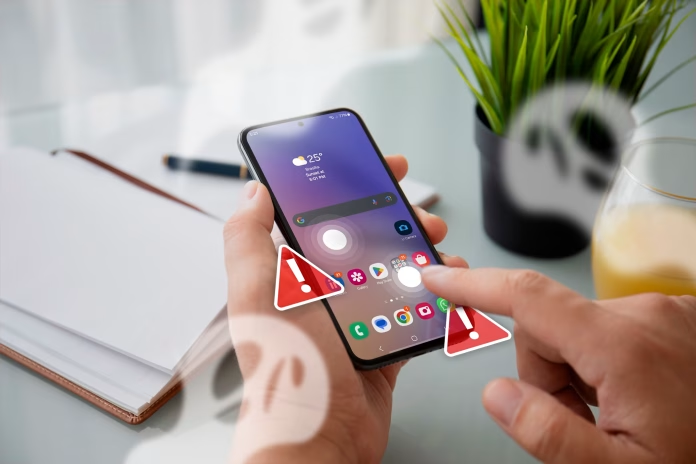The ghost touch issue on the Infinix Zero 30 can be extremely frustrating. The screen starts working on its own, taps random icons, scrolls without input, or types automatically. This problem makes the phone difficult to use and can also lead to accidental calls, unwanted messages, or settings being changed without permission.
This issue usually begins without warning and looks like a software malfunction. However, ghost touch is often caused by small internal or external factors that gradually affect screen sensitivity. One of the most common triggers is a faulty or low-quality screen protector. A thick or damaged protector can interfere with the touch panel and generate false inputs. Dust trapped under the tempered glass can also create static signals and cause the screen to behave strangely. Removing the old protector and testing the screen bare helps identify if this is the source. Replacing it with a thin, high-quality protector normally improves accuracy immediately.
Moisture is another major cause. If the screen has sweat, water drops, or humidity trapped in the edges, the touchscreen becomes unstable. This is why ghost touch often appears after rain, washing hands, or using the phone with wet fingers. Gently cleaning the display with a microfiber cloth and letting the device dry restores normal performance in many cases. Also, moisture inside the screen due to minor water exposure can create continuous false touches. Keeping the phone switched off for a few hours in a dry place helps evaporate internal moisture.
Charging-related ghost touch is also very common in Android devices. Using cheap or non-original chargers and cables produces unstable voltage, which directly affects the display. When the current fluctuates, the touch panel becomes overly sensitive and begins to register random taps. Switching to a certified charger or the official Infinix adapter immediately reduces this problem. Even if the issue appears only while charging, it means the charger is the root cause.
Software glitches also play a role in ghost touch. When system files get corrupted or when too many background apps overload the device, the touch driver becomes unstable. Restarting the phone refreshes the system and often stops ghost touch temporarily. Sometimes the issue appears after a system update due to minor bugs. Installing the latest patch or updating all apps helps stabilize the touchscreen.
Overheating is another reason why the Zero 30 may start touching on its own. Long gaming sessions, high brightness, camera recording, or charging while using the device cause the phone to heat up. When temperature rises beyond a safe point, the touch sensors become too sensitive, resulting in ghost input. Allowing the phone to cool down naturally usually stops the problem. Reducing graphics settings or avoiding heavy use while charging also prevents overheating.
Full storage can also cause the touch system to slow down or act strangely. When internal memory drops below 3–5 GB, the device cannot process touch commands smoothly. Clearing unnecessary files, deleting unused apps, and restarting the phone makes the system run normally again.
Hardware issues are the most serious cause of ghost touch. If the phone has been dropped recently, even a small internal crack or loose display connector can trigger continuous false touches. These hardware faults often get worse over time. Water damage, even without visible signs, can permanently affect the digitizer. In these cases, only professional inspection and repair can solve the issue. A technician may need to tighten connectors or replace the display panel if damaged.
Ghost touch can also occur if the screen flex cable is bent or under pressure. Using a tight phone cover or pressing the phone in your pocket can affect the screen frame and disturb the digitizer. Removing the cover and checking the phone helps determine if pressure is causing the problem.
Resetting the device is another effective method when the issue is caused by software corruption. A normal settings reset refreshes all touch configurations without deleting your data. If the problem continues, a factory reset may be required. Backing up data is necessary before resetting the device completely.
If none of these fixes help, it means the digitizer or touch IC is faulty. These components cannot be repaired at home and require professional service. Replacing the screen or touch IC usually solves ghost touch permanently.
Preventing ghost touch is easier when the phone is used carefully. Avoid exposing it to moisture, avoid cheap chargers, and do not use thick or damaged screen protectors. Keeping the device updated and allowing it to cool down after heavy use also protects the touchscreen from malfunctioning.



